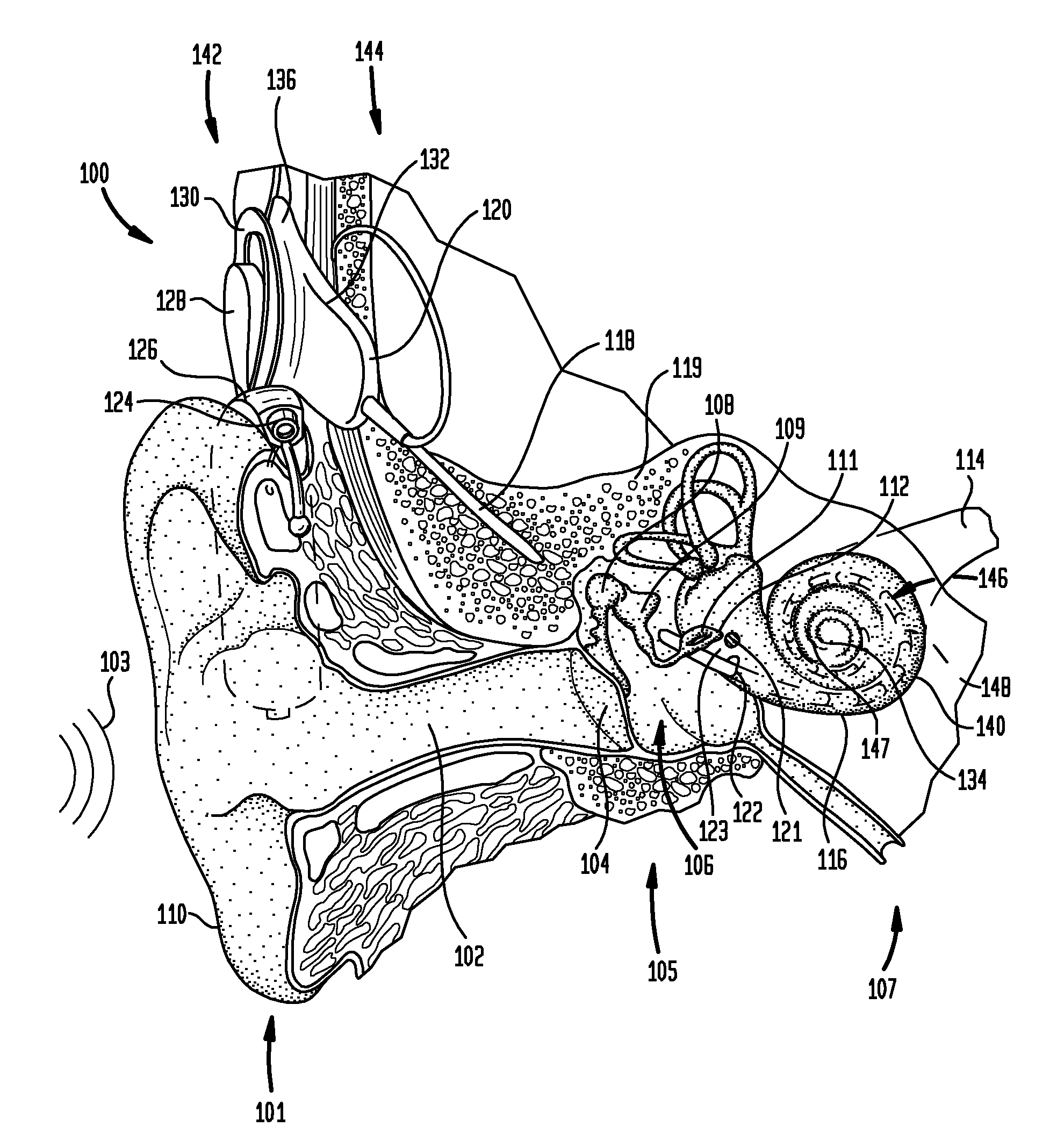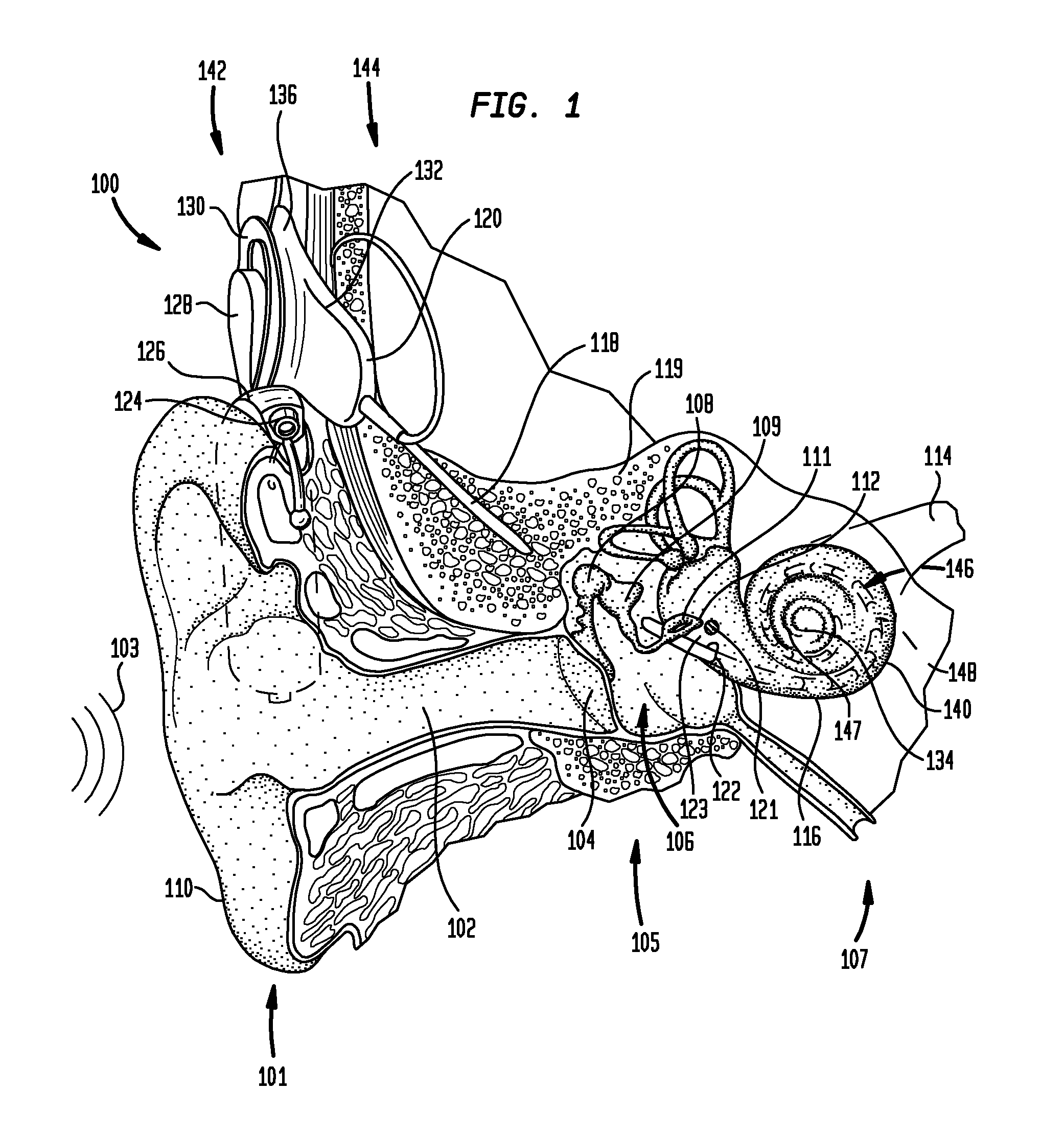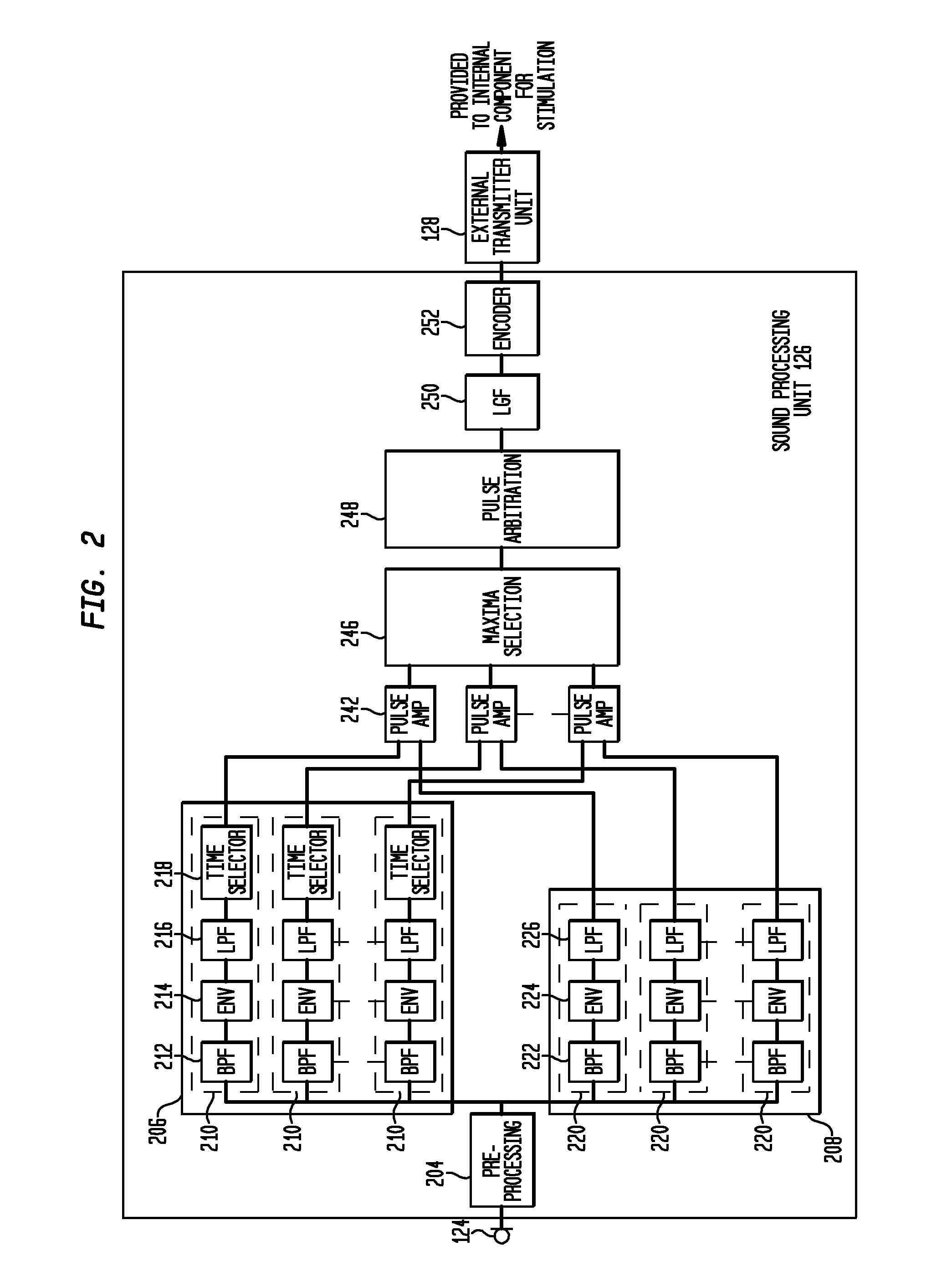Stimulus timing for a stimulating medical device
a technology of stimulating medical devices and stimuli, which is applied in the direction of electrical equipment, electrotherapy, artificial respiration, etc., can solve the problems of conductive hearing loss, impeded normal mechanical pathways for sound to reach the hair cells in the cochlea, and impaired hearing
- Summary
- Abstract
- Description
- Claims
- Application Information
AI Technical Summary
Benefits of technology
Problems solved by technology
Method used
Image
Examples
Embodiment Construction
[0021]Aspects of the present invention are generally directed to methods and systems for determining the timing of stimulation applied using a medical device, such as a cochlear implant or an auditory brain stimulator. In embodiments, the medical device filters a received signal to obtain a plurality of band-pass filtered signals, each corresponding to one or more stimulation channels. The medical device then determines the envelopes of these band-pass filtered signals. Next, the medical device determines the stimulation timing (i.e., the pulse times) for the corresponding stimulation channel based on the timing of a particular phase (e.g., a peak, a minimum, etc.) of the envelope. For example, the medical device may select the stimulation pulse times based on when the corresponding envelope reaches its peaks.
[0022]In an embodiment, the medical device may determine the stimulation timing using a mechanism in which the medical device processes the received signals using two separate ...
PUM
 Login to View More
Login to View More Abstract
Description
Claims
Application Information
 Login to View More
Login to View More - R&D
- Intellectual Property
- Life Sciences
- Materials
- Tech Scout
- Unparalleled Data Quality
- Higher Quality Content
- 60% Fewer Hallucinations
Browse by: Latest US Patents, China's latest patents, Technical Efficacy Thesaurus, Application Domain, Technology Topic, Popular Technical Reports.
© 2025 PatSnap. All rights reserved.Legal|Privacy policy|Modern Slavery Act Transparency Statement|Sitemap|About US| Contact US: help@patsnap.com



